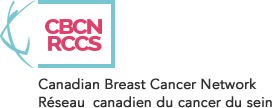By continuing to use our site, you consent to the processing of cookies, user data (location information, type and version of the OS, the type and version of the browser, the type of device and the resolution of its screen, the source of where the user came from, from which site or for what advertisement, language OS and Browser, which pages are opened and to which buttons the user presses, ip-address) for the purpose of site functioning, retargeting and statistical surveys and reviews. If you do not want your data to be processed, please leave the site.
The Voice of People With Breast Cancer
your path to accessing financial resources
FinancialNavigator
Health Insurance and Benefits
Making a Claim
Health and Drug Benefits
Health Benefits is a type of insurance that helps to cover the cost of medical services and supplies that aren’t usually covered under universal provincial medicare. Benefit packages vary, even within the same company, so it is good to determine AHEAD of purchasing something if you will be covered for it, how you claim the cost, and how much of the cost will be covered.
There are a variety of items that might be covered as part of a benefits package:
- Hospital Room Upgrade to a Semi-Private or Private Room (if available)
- Home Nursing Care (if required beyond what is provincially funded)
- Ambulance Services
- Equipment and Mobility Aids
- Prosthetic Devices
- Physiotherapy, Osteopathy, Occupational therapy and Massage therapy services
- Mental Health Therapy
- Prescription Drugs
The coverage of most services are clearly outlined in your policy booklet. You can also call the insurer or check your profile on-line to verify the information. The coverage of prescription drugs, equipment, and assistive devices may not be as clear. For these items, it is best to contact the insurer ahead of time or have the provider (e.g. a pharmacy or health product store) check for you.
Inquiring about Coverage
If you are calling your insurer to check on coverage of a prescription drug, product or device, you will need the following information:
- Your policy # (located on your insurance card if you have one)
- Your ID # (located on your insurance card)
- The Drug Identification Number (DIN), or Product #/Product Name
- To look up a DIN, go to the Government of Canada Drug Product Database and type in the Product Name
- To get the Product # or name, check with the person who has recommended the product
When you call the insurer, ask the following questions:
- Is this (drug, product, device) listed on my plan?
- Does this (drug, product, device) need to be pre-approved before I can get it? If so, how do I get the paperwork for it?
- How much of the cost is covered by the plan each time I get this (drug, product, device)?
- Is there a limit to how much the plan pays per year?
- Are there any other limitations I should know about?
Prior Authorization
Some drugs, products or devices need to be approved by the insurer BEFORE they can be paid for. This is called “prior authorization” or “special authorization”. Many plans use this to ensure the drug or product you were prescribed is appropriate and meets their guidelines for payment.
If you are told by the insurer that a Prior Authorization is needed, there are two way this is done:
- The prescribing physician or practitioner needs to complete a form. This form is usually available on the insurer’s website or can be emailed to you by the insurer. It is YOUR responsibility make sure the prescriber receives this form.
- A billing “code” is used to take the place of the form. It is used by the pharmacist or provider to confirm you meet the criteria of the insurer for the drug or product. Billing prior authorization codes are only used in drugs that are commonly prescribed. You can check with the insurer if a code can be used instead of a form for prior authorization.
The most common delays experienced with Prior Authorization are due to errors or omissions by the prescriber when completing forms. It is helpful to contact the insurer after the form is submitted to make sure the form was received and was complete. On average, the prior authorization review takes 3-10 business days.
If a Drug or Product isn’t Listed on your Plan
If you are told by the insurer/pharmacist/provider that a drug or product isn’t covered by your plan, check the following information to determine your next steps:
- Does the drug or product require Prior Authorization paperwork to be considered?
- Is the drug or product a “non-benefit”? This means it is not included in your plan because the insurer reviewed it and decided not to include it, or your plan is limited.
- Is the drug or product new to Canada? Check to see if the insurer has reviewed the drug or product yet. If they have not, or a review is in progress, you might be able to appeal for coverage.
How to Appeal for Coverage of a Drug/Product/Device
If you discover that a drug or product is NOT included in your plan, and it is NOT a “non-benefit”, you may have some options for appeal:
- The prescriber can write a letter outlining your need for the drug. An appeal letter should be sent directly from the prescriber to the insurer and it should include the following:
- Your name, insurance policy # and insurance ID #
- Your diagnosis
- Your prior treatment (if any)
- The drug or product you require (with DIN or product #)
- The reason this drug or product is being recommended, including any recent studies showing the benefit of this drug or product
- How long you will be using the drug or product
- How you will be monitored or assessed to show impact of the drug or product
- If there are other options for treatment, why these options are not appropriate
- If you have a group plan, you can meet with the sponsor of the plan (i.e. your employer) to discuss your situation and alert them to the fact it is not covered; only pursue this option if you are comfortable discussing this with your employer or their HR dept AND you have few other options for treatment; some plans allow employers a say in what is or is not covered, some do not.
How Health Benefit Claims are Paid
If the drug/product/device is listed on your plan and approved for coverage, how your plan pays for it depends on how your plan is set up:
- A direct pay plan uses a card that contains your policy and ID number and allows a pharmacy or health provider to bill the plan for their portion directly; if you have a portion to pay, you pay that to the provider.
- A deferred or reimbursement plan requires you to pay the full cost to the pharmacy or provider up-front and submit a claim for reimbursement; with most plans this can now be done on-line through your profile on their website; if you are set up for direct deposit the money is then deposited in your account within a few days; the money you receive back is what the plan covers, less your portion of the cost.
How much your plan pays for a drug, product, or device depends on your plan. If you have to pay something, these are the types of fees that are charged and leftover costs that may apply. Understanding what you have to pay can help you better prepare and anticipate if you need help with the cost of your medication and supplies.
Deductible – an amount you are required to pay before the insurer will provide payment on any benefits; usually this is a set amount you must pay on any drugs or products first at the beginning of the year; some plans use this feature, some don’t.
Co-payment – a portion (%) of the cost OR a set dollar amount that you pay each time you pick up the drug or product.
Dispensing Fee – an amount you pay to the pharmacy/provider for the service if preparing and dispensing the drug/product; a dispensing fee can range from $7-15 dollars.
Generic Pricing – some plans are set up to default to the lowest price available for a drug or product; usually this applies to a drug/product where there is both a brand and a “generic” version available; even if you purchase the brand, the plan will only pay the generic price so you are left facing the difference in cost; most pharmacies will inform you ahead of filling a prescription that the plan only pays the generic price; if you are unsure…ask BEFORE you fill the prescription.
SHARE
Our Stories
Events
FAQ's
- We value your feedback
-
- Glossary of Terms
-
Not sure of a term referenced in the FinancialNavigator?
Click here to find the definition.
- Additional Information
-
I have information to help update this tool, who do I contact?
If you have additional information that would be helpful to include in this tool please email cbcn@cbcn.ca or call us at 1-800-685-8820.
- Contacting CBCN
-
How can I connect with CBCN directly about specific questions?
Connect with us via email at cbcn@cbcn.ca or on the phone at 1-800-685-8820.





